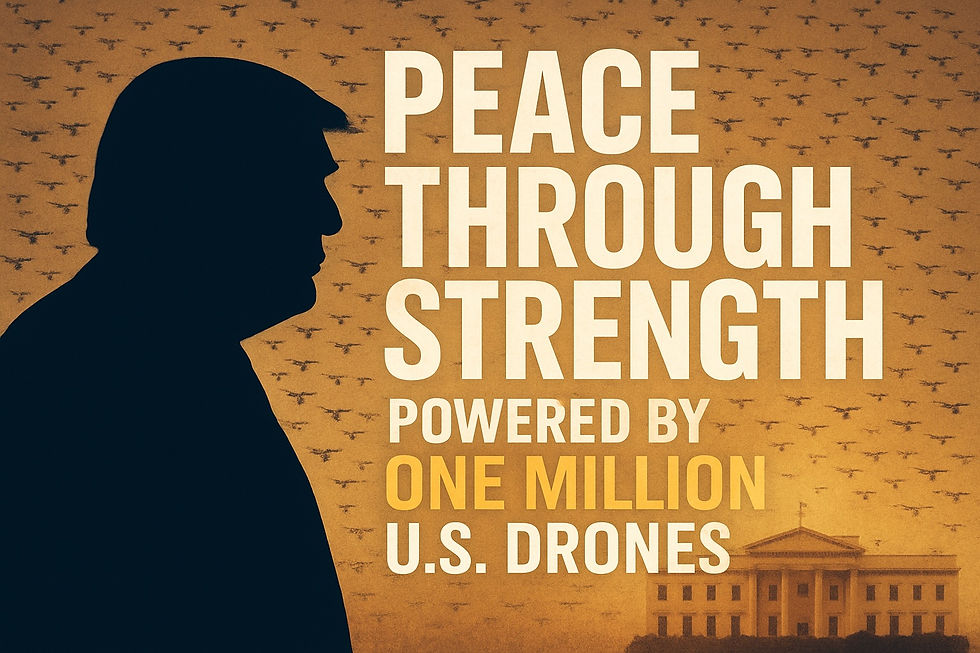Top Benefits of Drone Mapping Technology
- Merlin Dean

- Oct 7
- 4 min read
Updated: Nov 5
In recent years, drone technology has revolutionized many industries, offering new ways to collect data and analyze environments. One of the most impactful applications is drone mapping. This technology uses drones equipped with cameras and sensors to create detailed maps and 3D models of various terrains and structures. The benefits of drone mapping are vast, making it an essential tool for professionals in construction, agriculture, environmental monitoring, and more.
Key Benefits of Drone Mapping
Drone mapping offers several advantages over traditional mapping methods. It is faster, more accurate, and often more cost-effective. Here are some of the primary benefits:
Speed and Efficiency: Drones can cover large areas quickly, capturing high-resolution images in a fraction of the time it would take with ground surveys or manned aircraft.
High Accuracy: Equipped with GPS and advanced sensors, drones provide precise geospatial data that can be used for detailed analysis.
Cost Savings: Reducing the need for manual labor and expensive equipment lowers overall project costs.
Safety: Drones can access hazardous or hard-to-reach areas without putting human operators at risk.
Versatility: From urban planning to agriculture, drone mapping adapts to various industries and project types.
These benefits make drone mapping a valuable asset for professionals seeking reliable and efficient data collection methods.

Practical Applications and Benefits of Drone Mapping
The practical applications of drone mapping are extensive. Here are some examples that highlight its usefulness:
Construction and Infrastructure
In construction, drone mapping helps monitor progress, inspect structures, and plan site layouts. Project managers can use up-to-date maps to track changes and identify potential issues early. This reduces delays and improves project outcomes.
Agriculture
Farmers use drone mapping to monitor crop health, assess irrigation systems, and manage fields more effectively. By analyzing aerial images, they can detect pest infestations or nutrient deficiencies and take timely action.
Environmental Monitoring
Environmental scientists rely on drone mapping to study ecosystems, track wildlife habitats, and monitor changes in land use. This technology provides detailed data that supports conservation efforts and policy-making.
Disaster Management
After natural disasters, drones quickly map affected areas to assess damage and plan relief efforts. This rapid response capability is crucial for saving lives and resources.
Urban Planning
City planners use drone maps to visualize development projects, analyze traffic patterns, and design public spaces. This helps create more efficient and sustainable urban environments.

Can you make money with drone mapping?
Yes, drone mapping presents numerous opportunities for generating income. Many businesses and individuals are capitalizing on this technology by offering specialized services. Here are some ways to monetize drone mapping:
Service Provider: Offering drone mapping services to industries such as construction, agriculture, and real estate. Clients pay for detailed maps, 3D models, and data analysis.
Consulting: Providing expert advice on how to integrate drone mapping into existing workflows or projects.
Data Analysis: Selling processed data and insights derived from drone maps to companies needing actionable information.
Training and Education: Teaching others how to operate drones and use mapping software effectively.
Software Development: Creating applications that enhance drone mapping capabilities or simplify data processing.
Starting a drone mapping business requires investment in equipment, training, and marketing, but the potential returns are significant given the growing demand.

How to Get Started with Drone Mapping
If you are interested in leveraging drone mapping technology, here are some practical steps to begin:
Research Regulations: Understand local laws regarding drone operation, including licensing and flight restrictions.
Choose the Right Equipment: Select drones with suitable cameras and sensors for your mapping needs.
Learn Software Tools: Familiarize yourself with mapping and photogrammetry software to process and analyze data.
Practice Flying: Gain experience piloting drones to ensure safe and efficient data collection.
Build a Portfolio: Start with small projects to showcase your skills and attract clients.
Network: Connect with industry professionals and potential customers to grow your business.
By following these steps, you can effectively enter the drone mapping market and take advantage of its benefits.
Future Trends in Drone Mapping Technology
The future of drone mapping looks promising with continuous advancements in technology. Some trends to watch include:
Improved Sensors: Enhanced cameras and LiDAR systems will provide even more detailed and accurate data.
AI Integration: Artificial intelligence will automate data processing and analysis, making mapping faster and more accessible.
Swarm Drones: Multiple drones working together can cover larger areas more efficiently.
Real-Time Mapping: Live data streaming will enable immediate decision-making in critical situations.
Increased Accessibility: As costs decrease, more industries and individuals will adopt drone mapping technology.
Staying informed about these trends will help users maximize the benefits of drone mapping in their projects.
For those interested in exploring professional drone mapping services, consider visiting this link to learn more about how drone mapping can transform your operations.








Comments